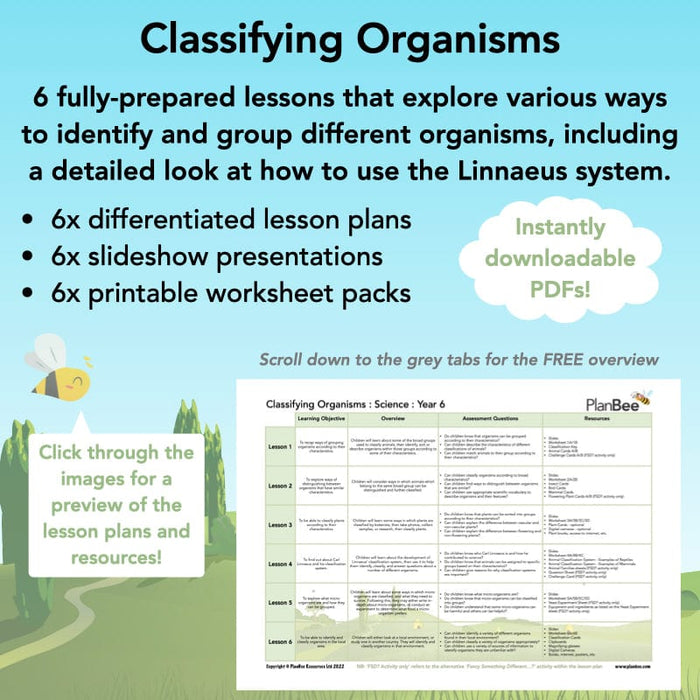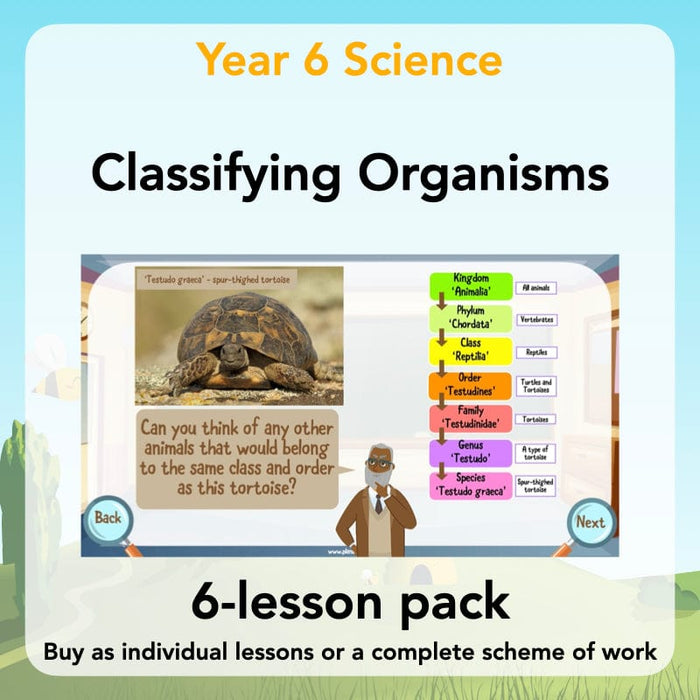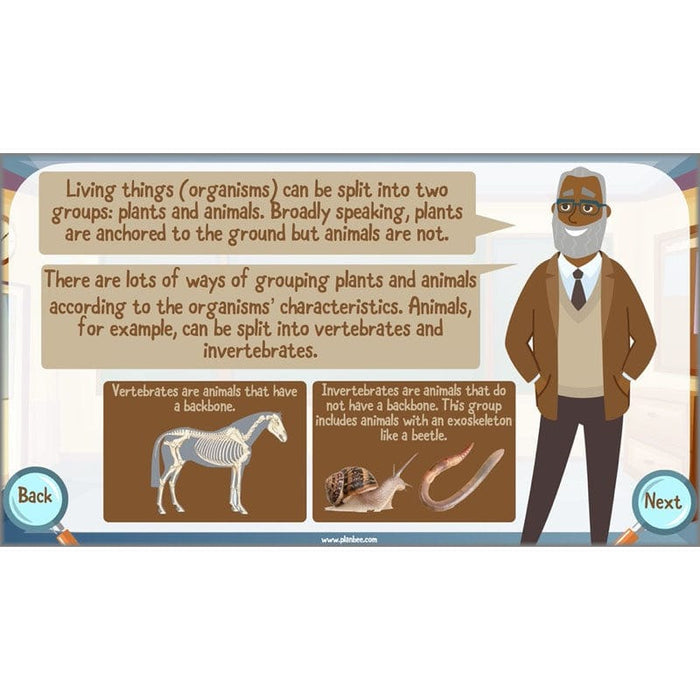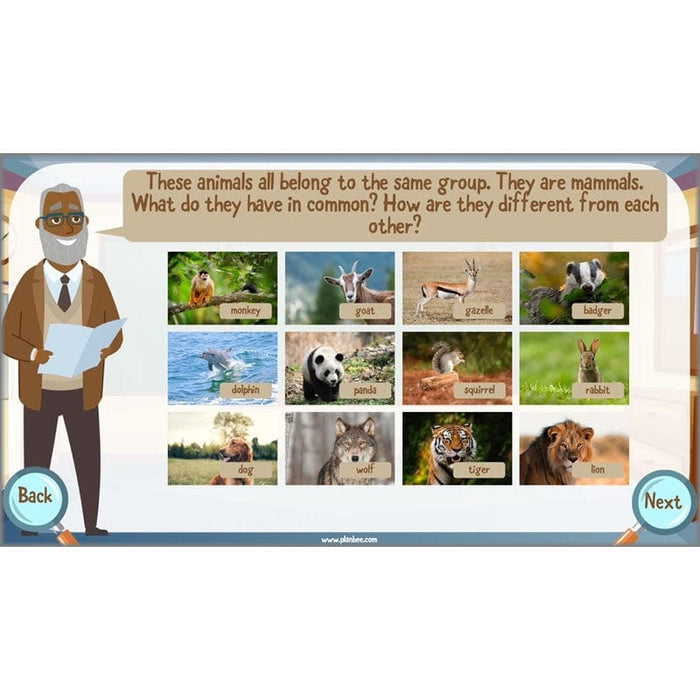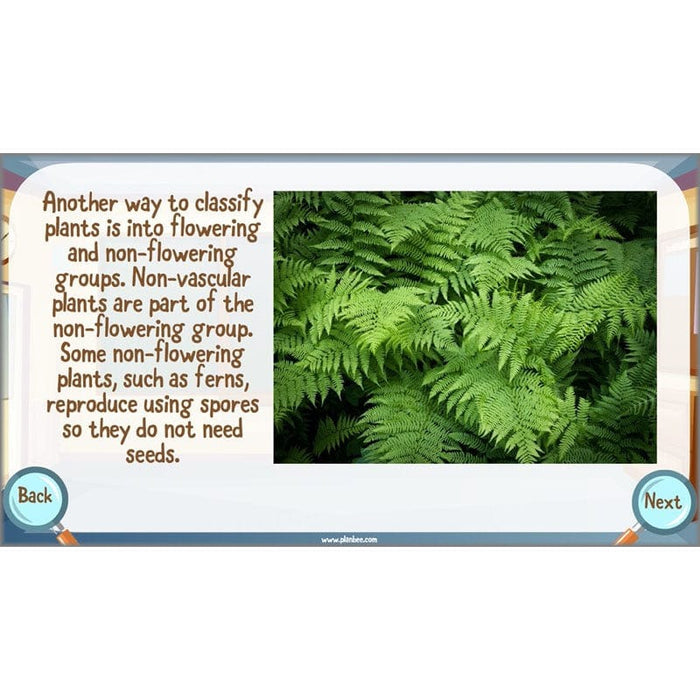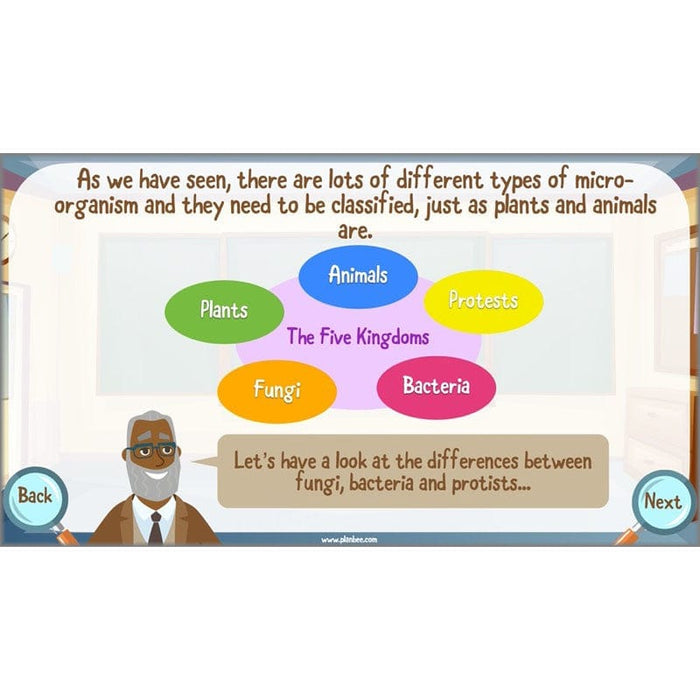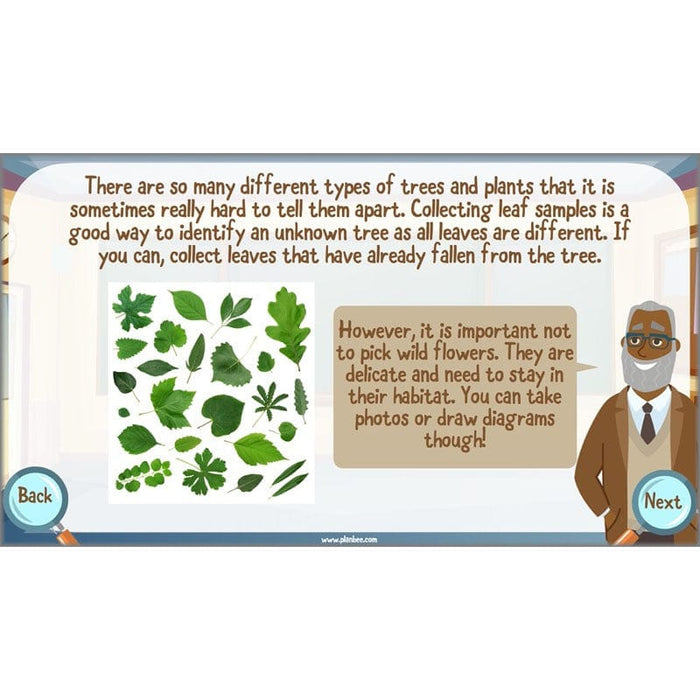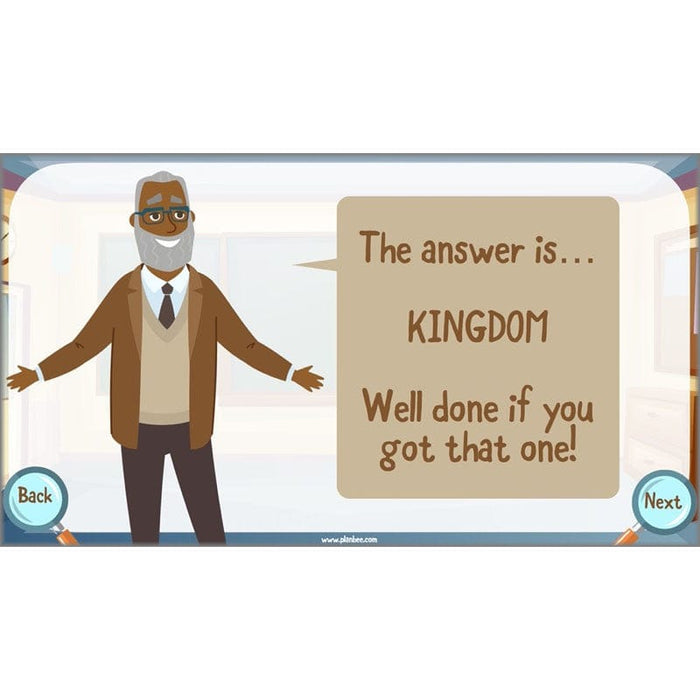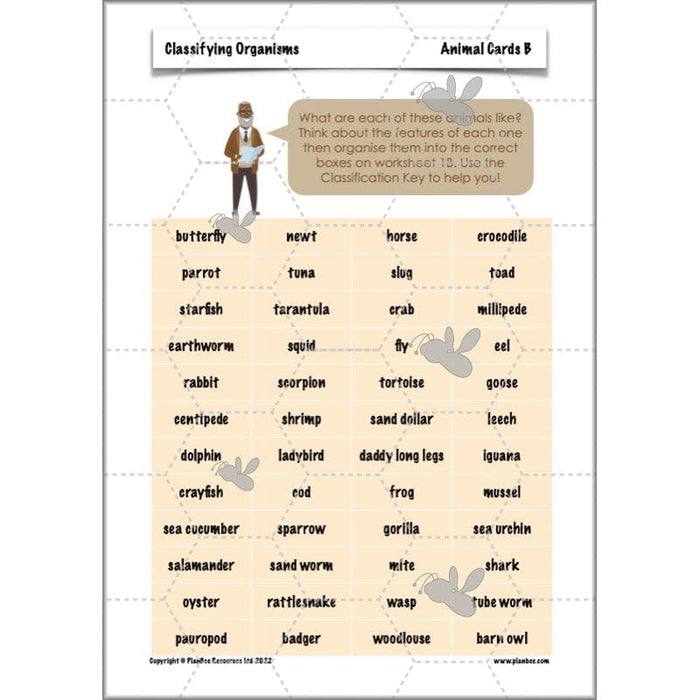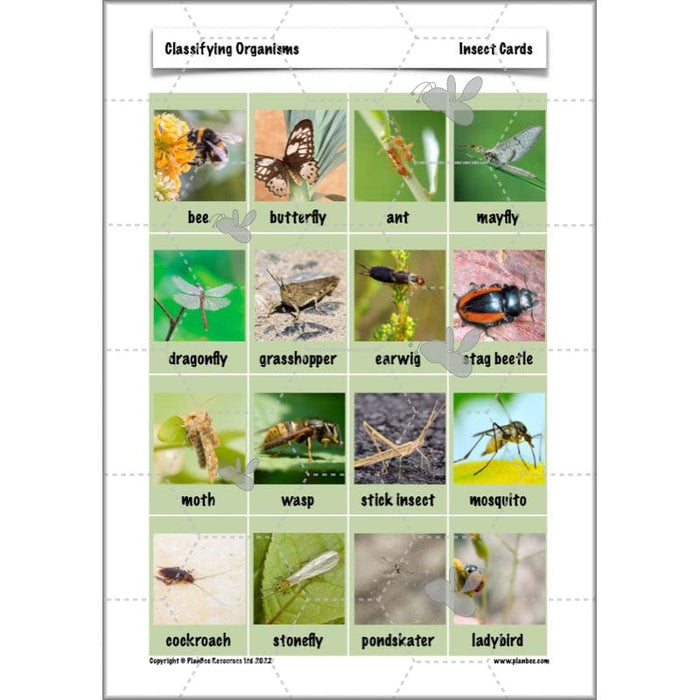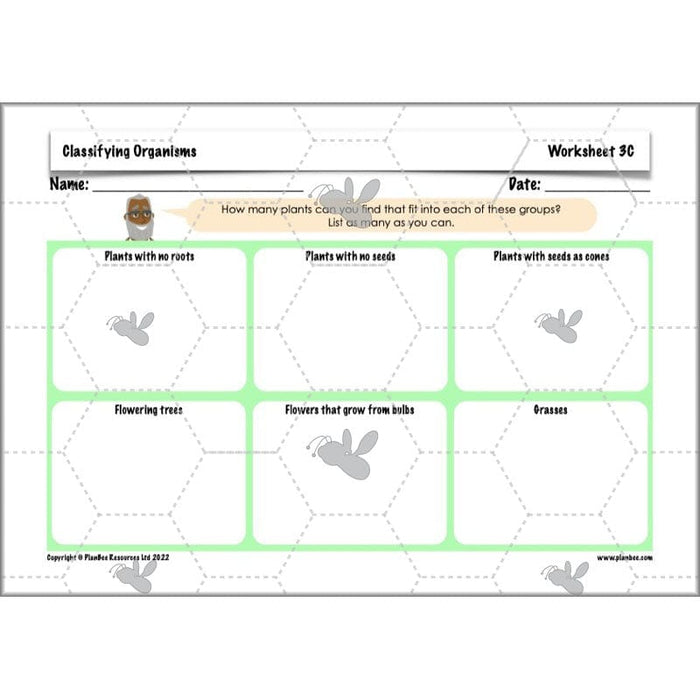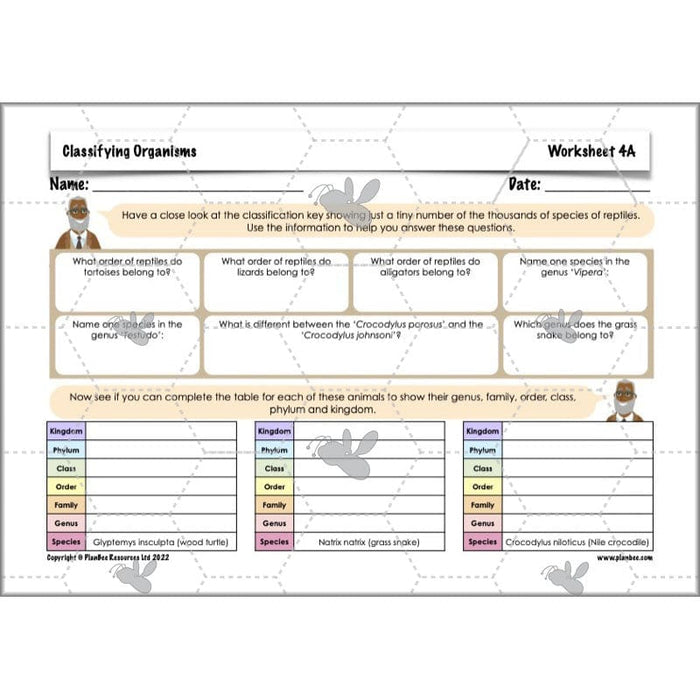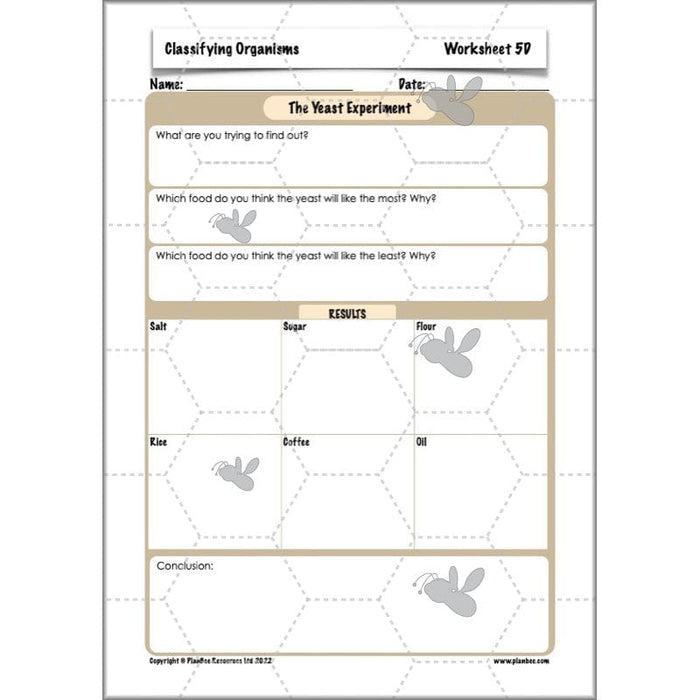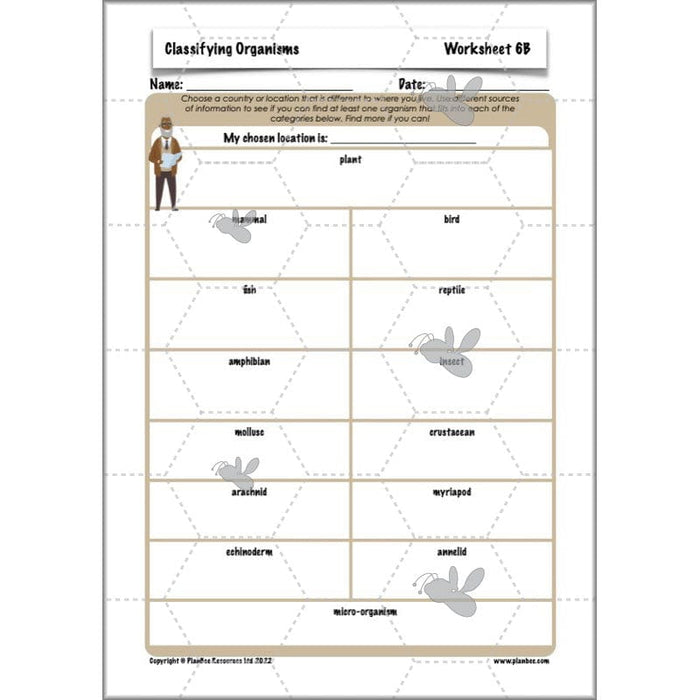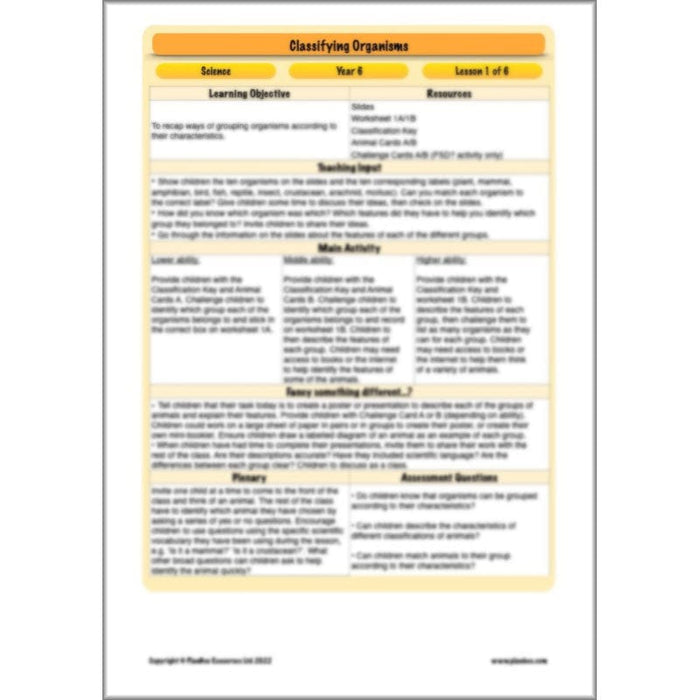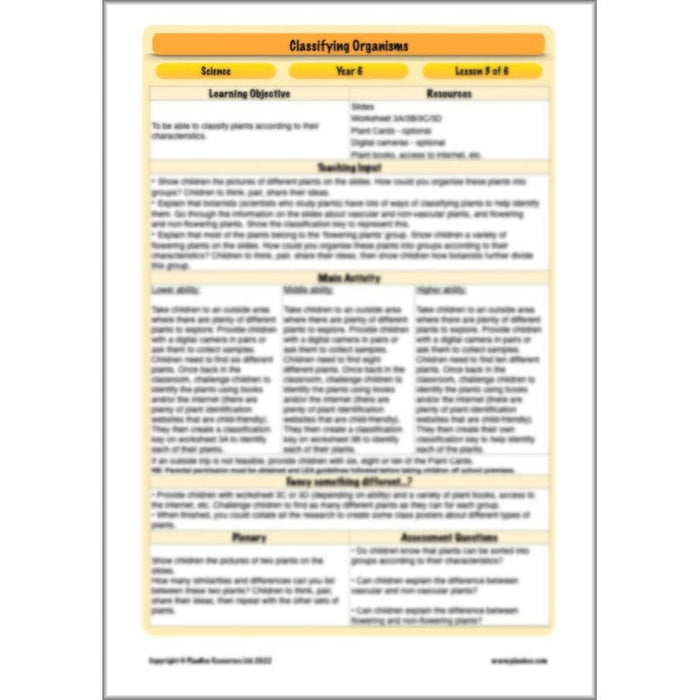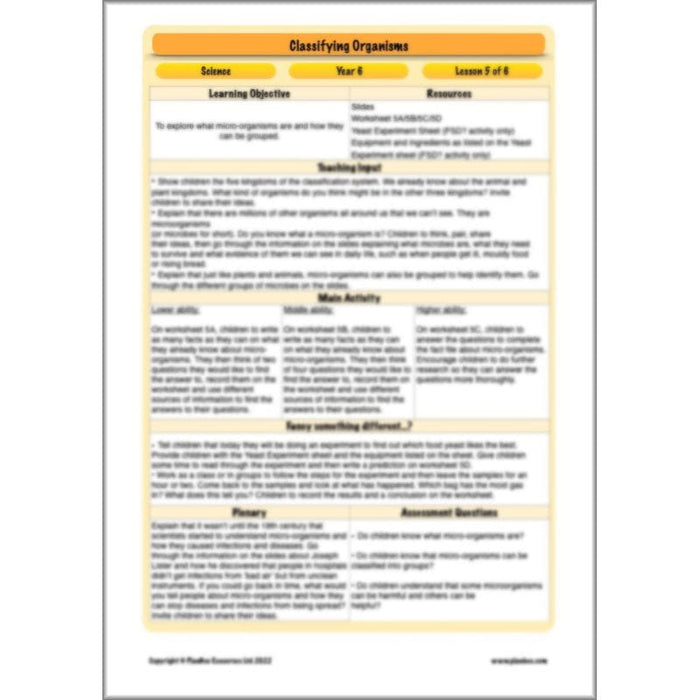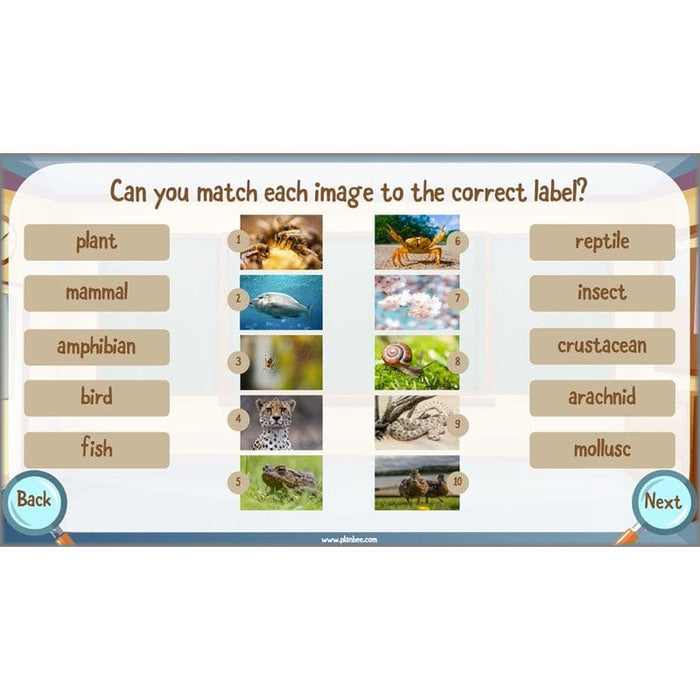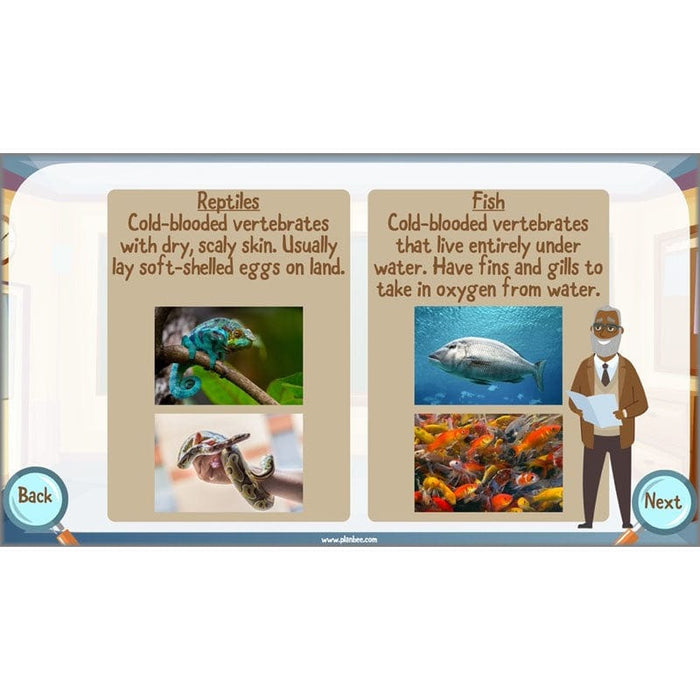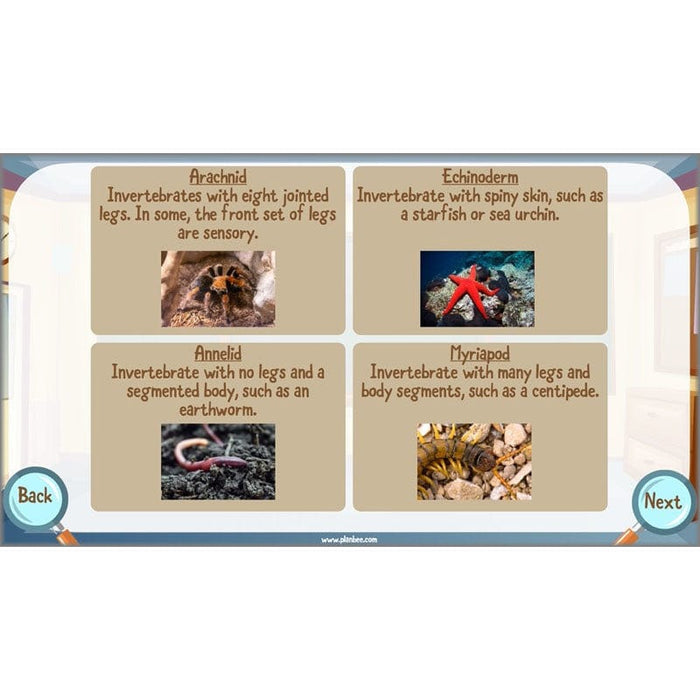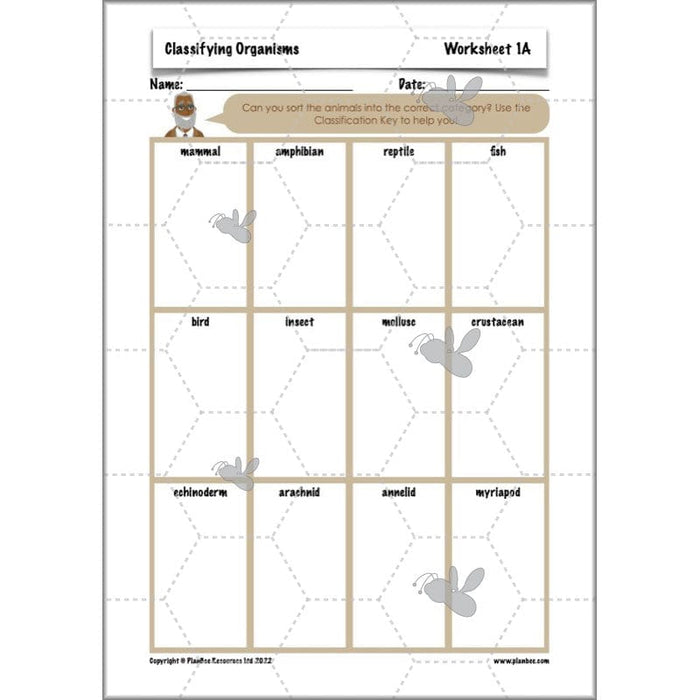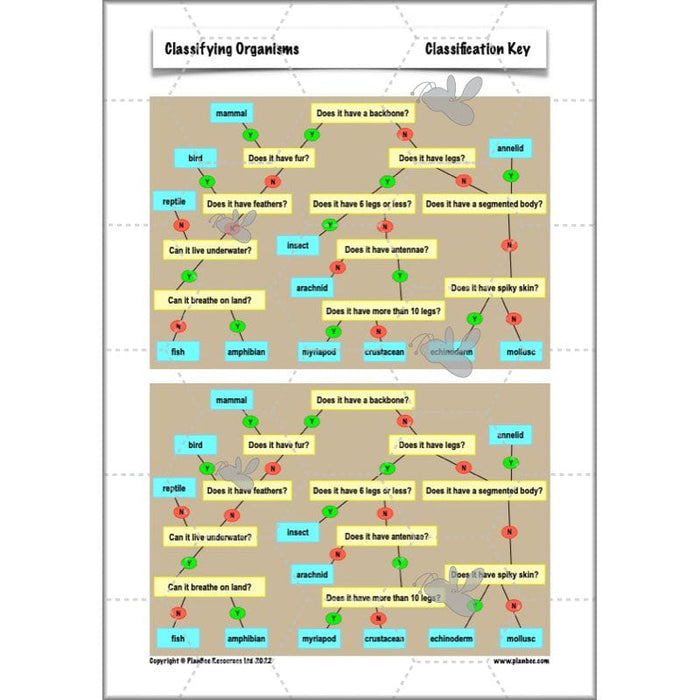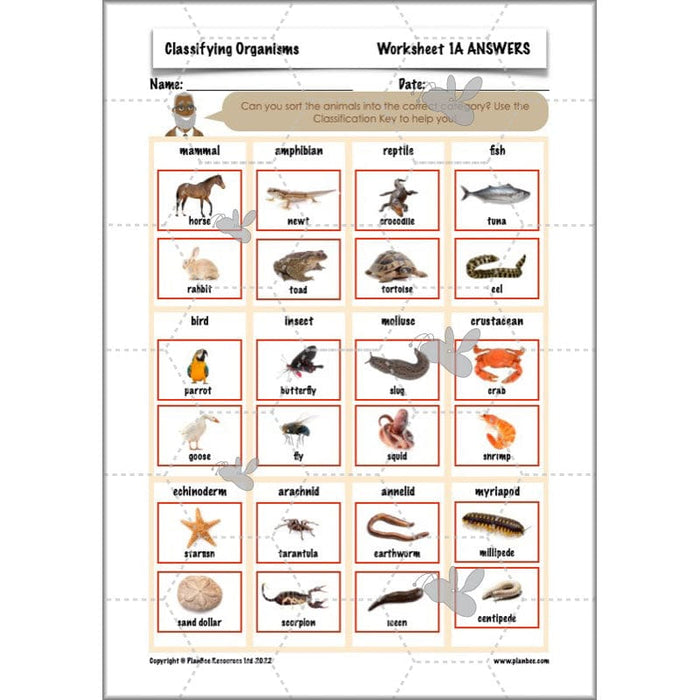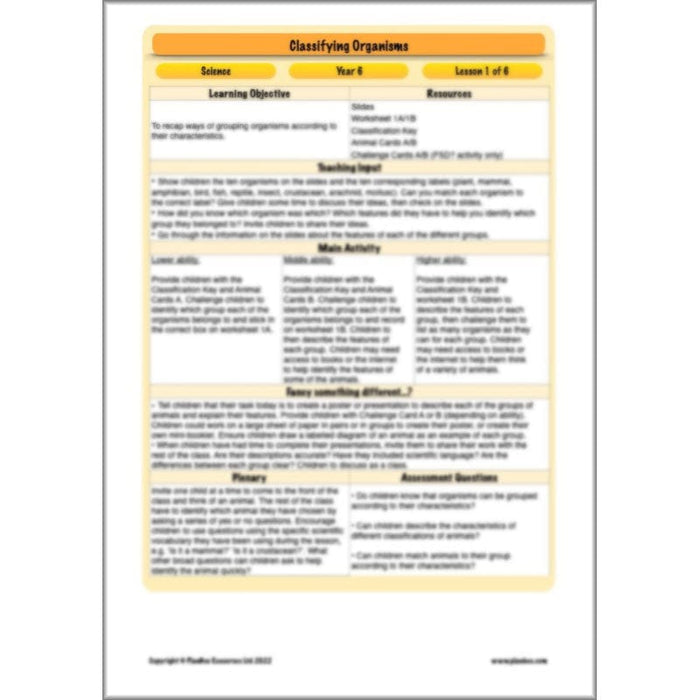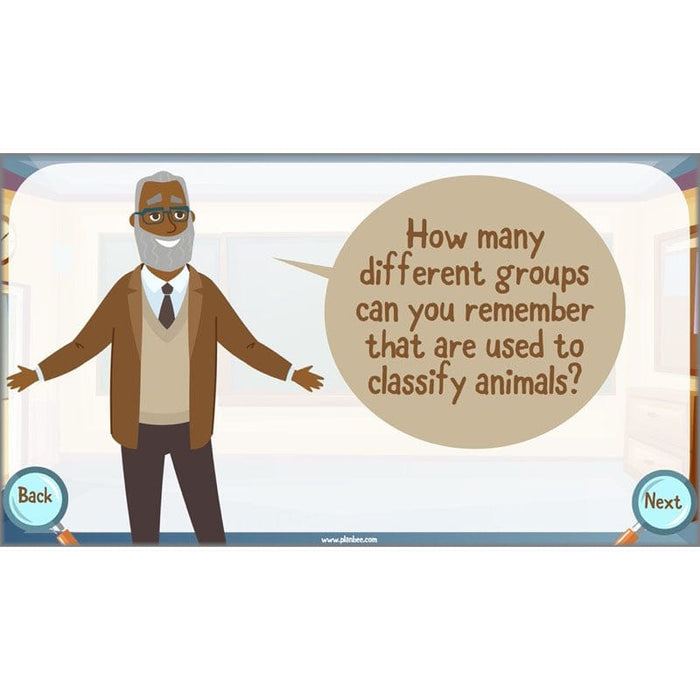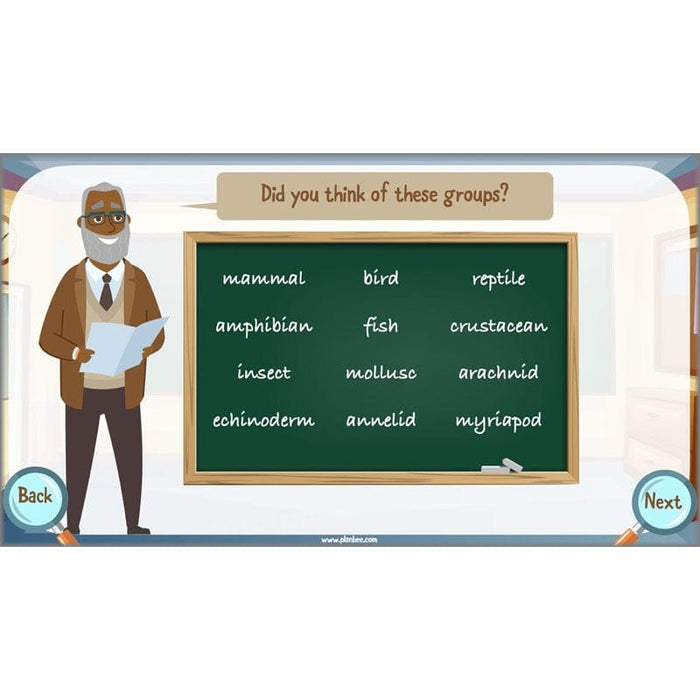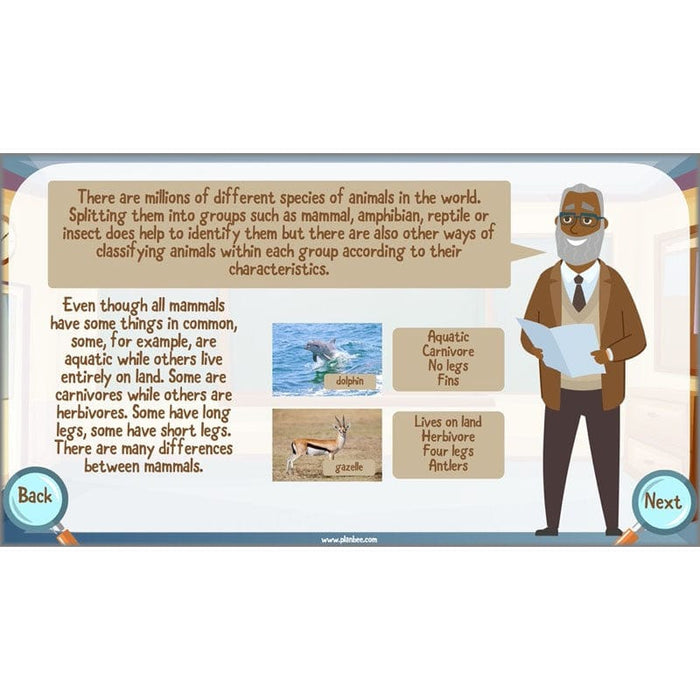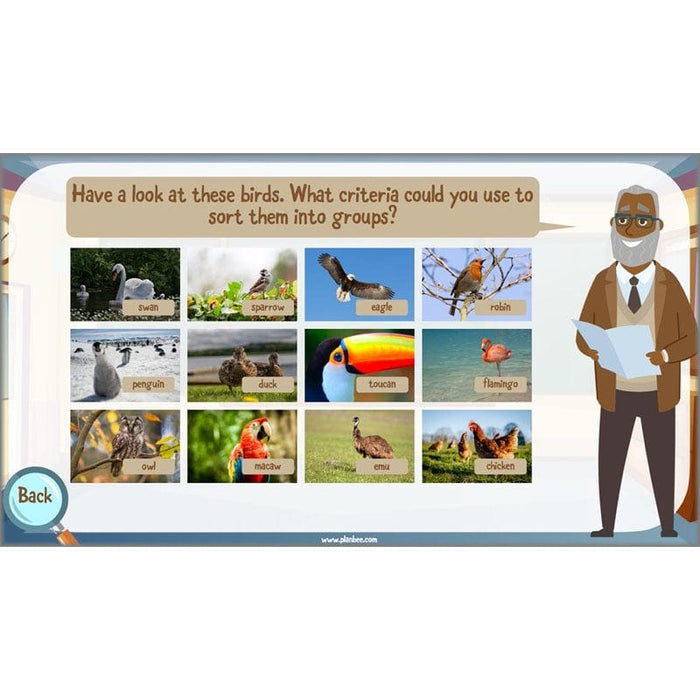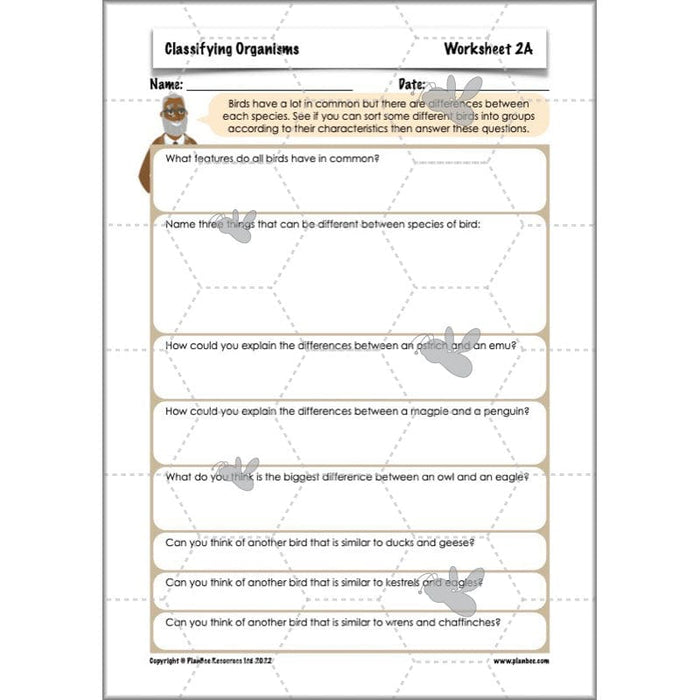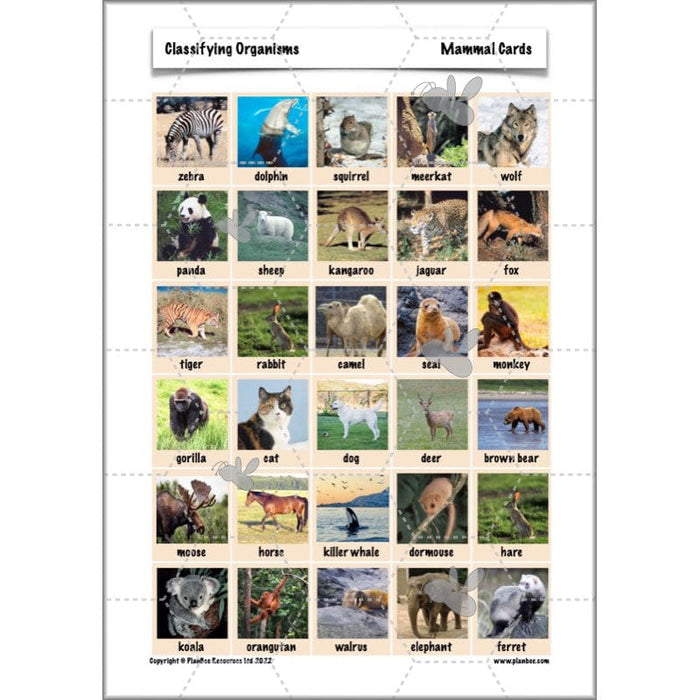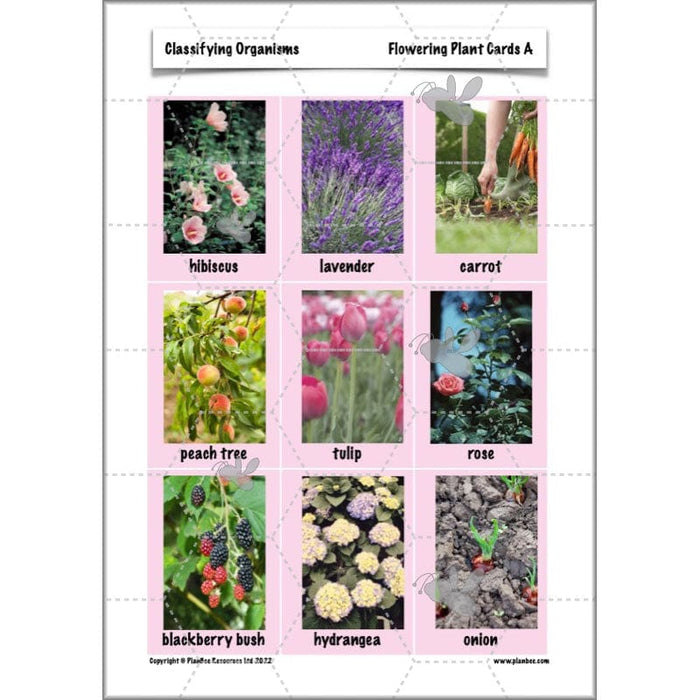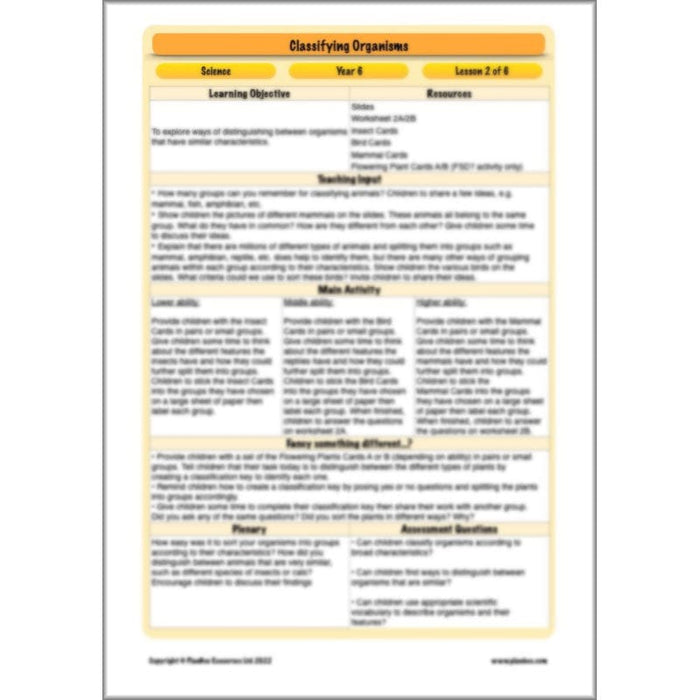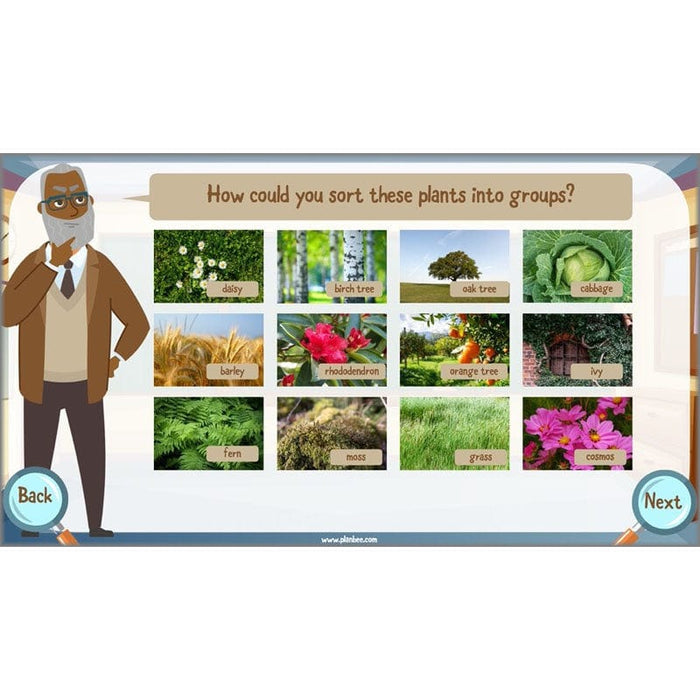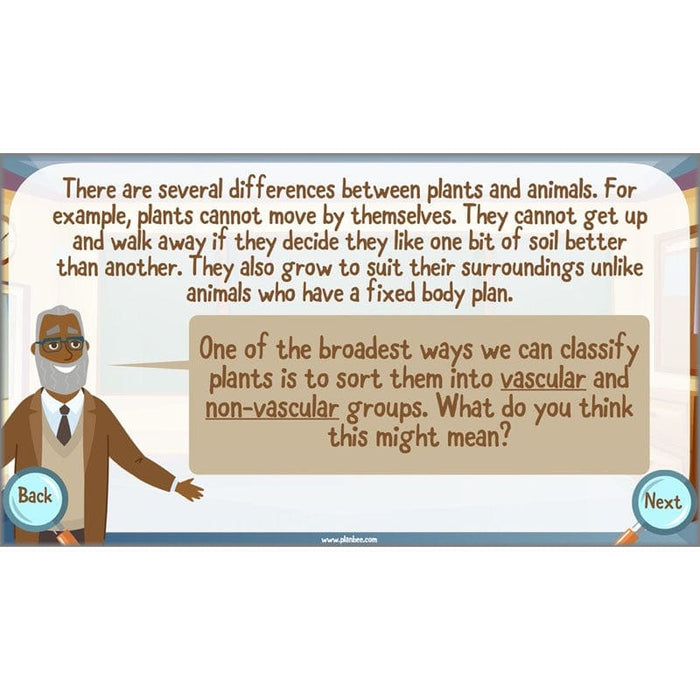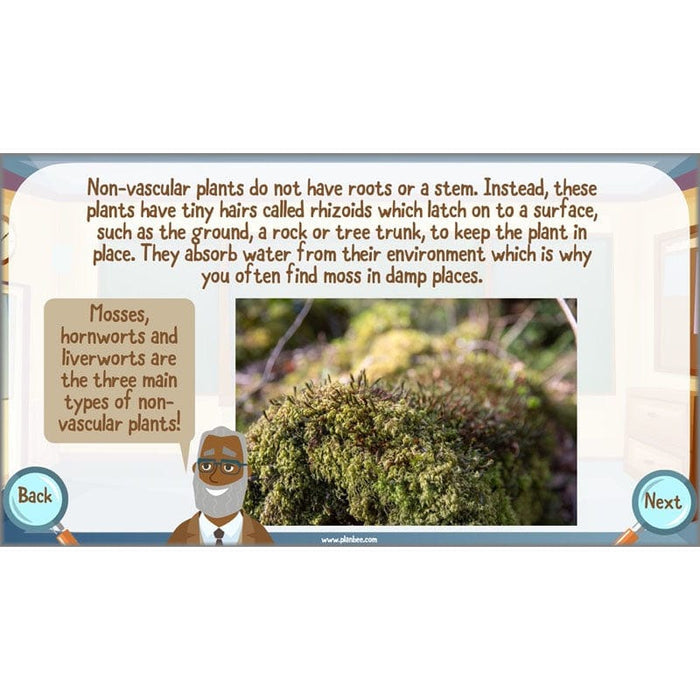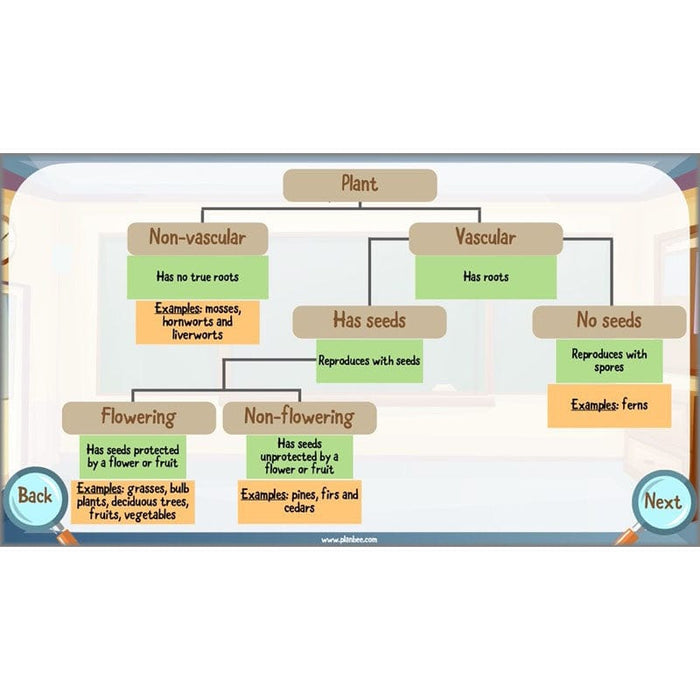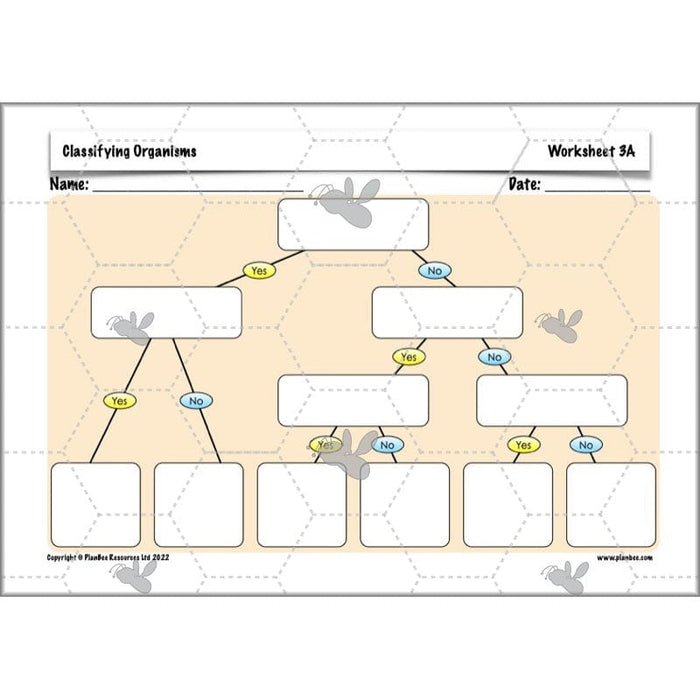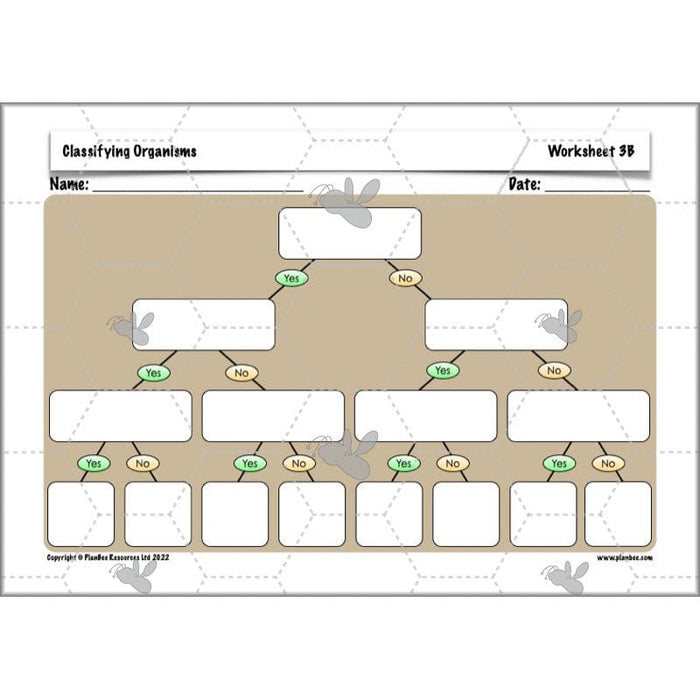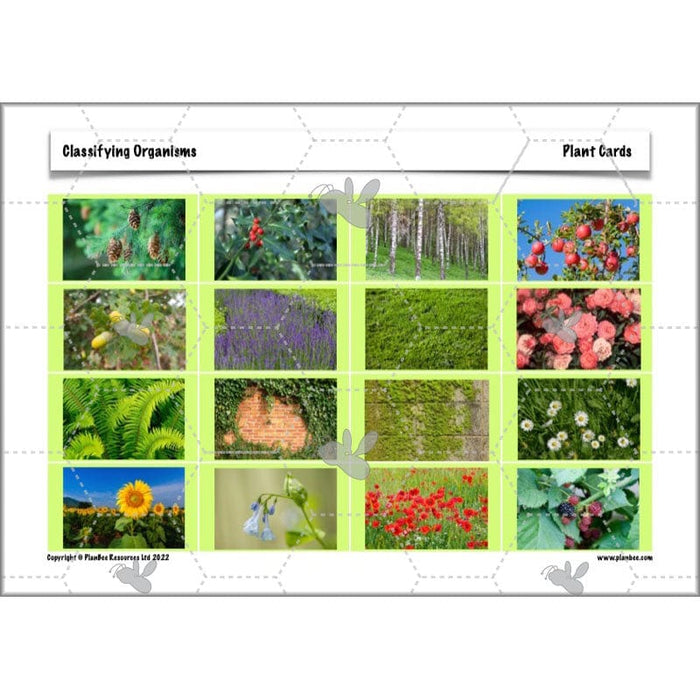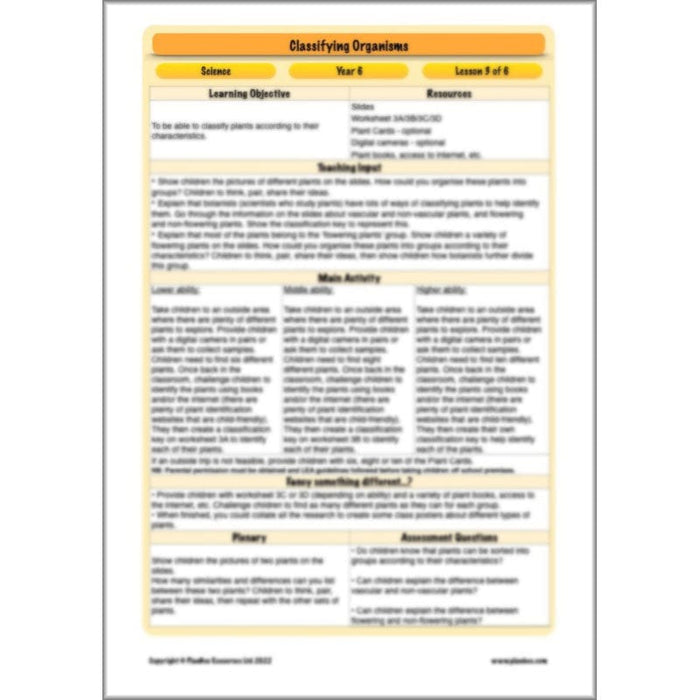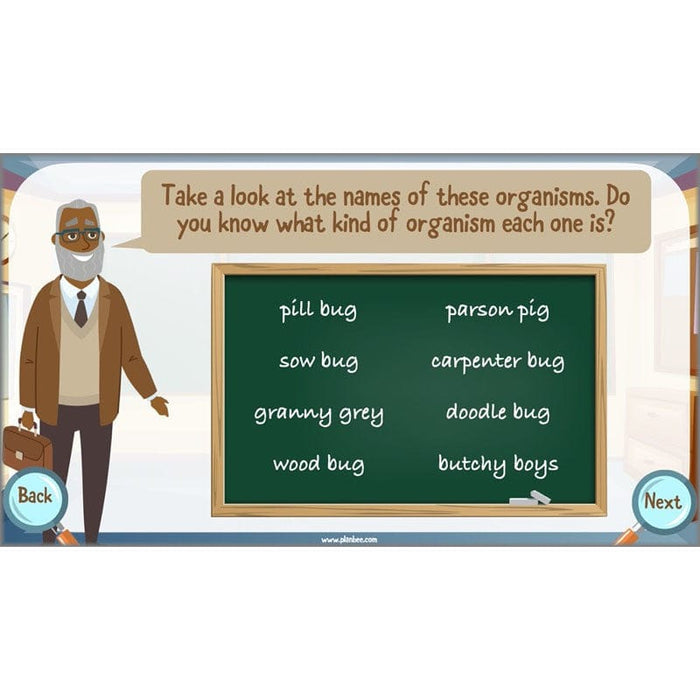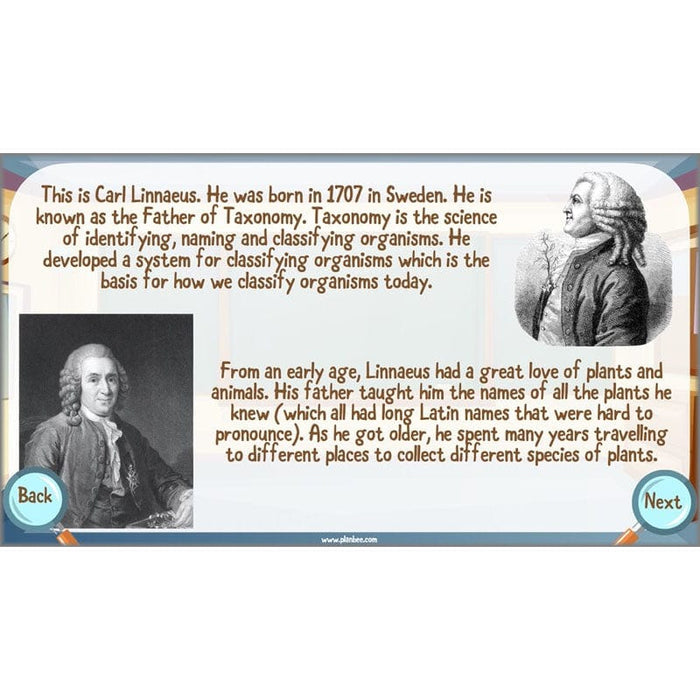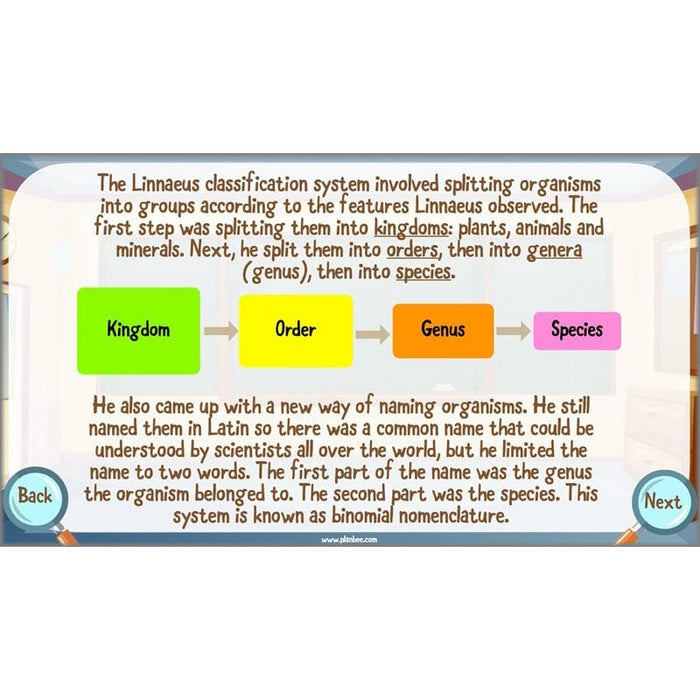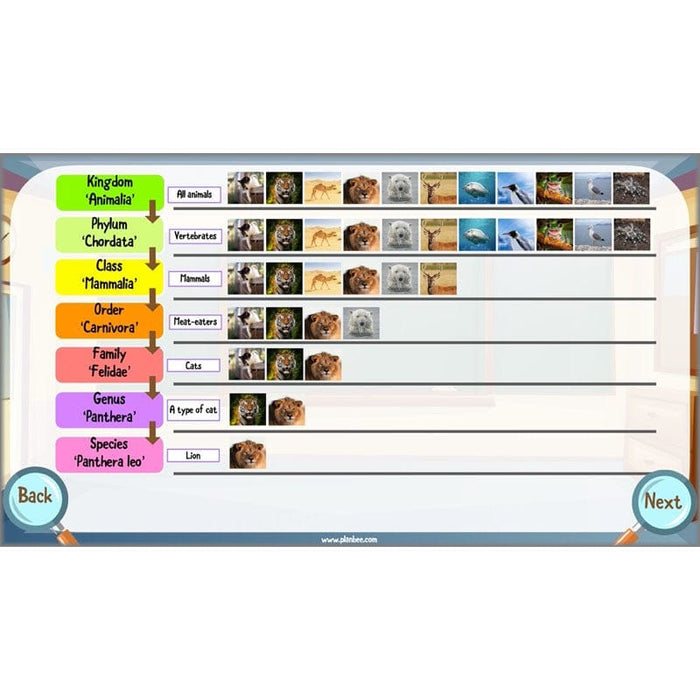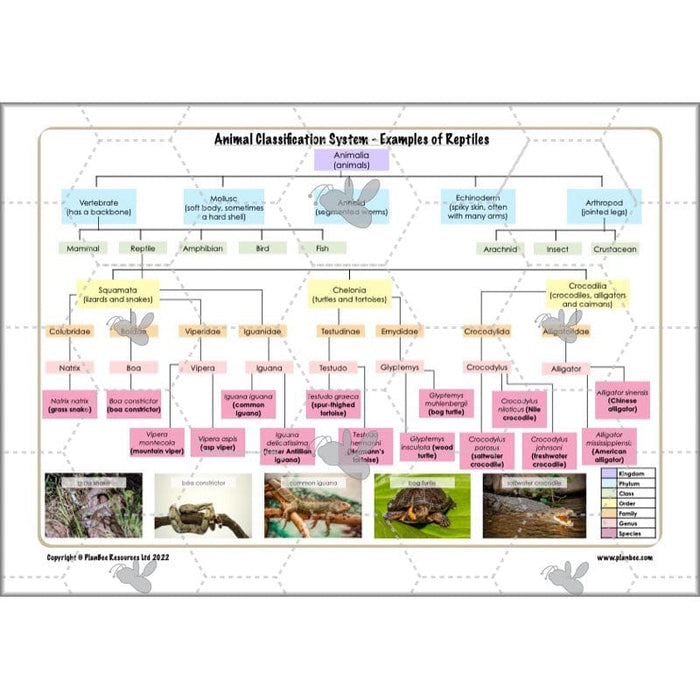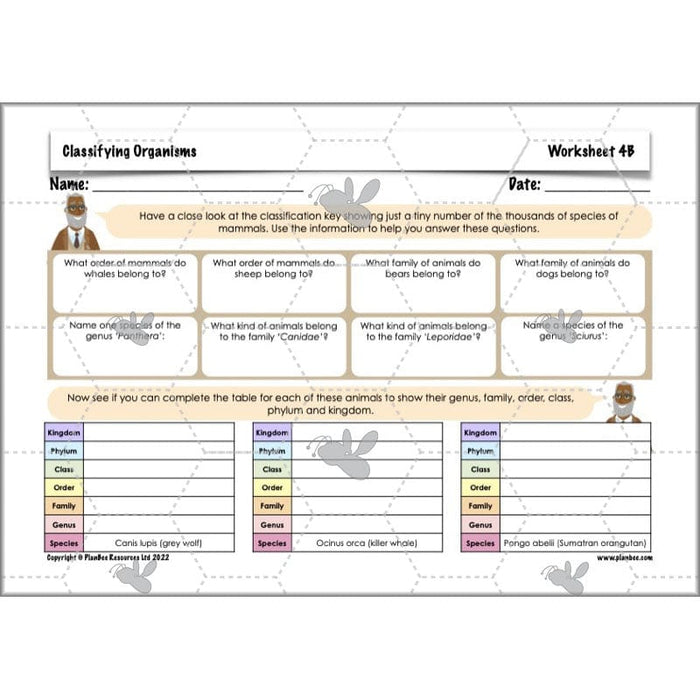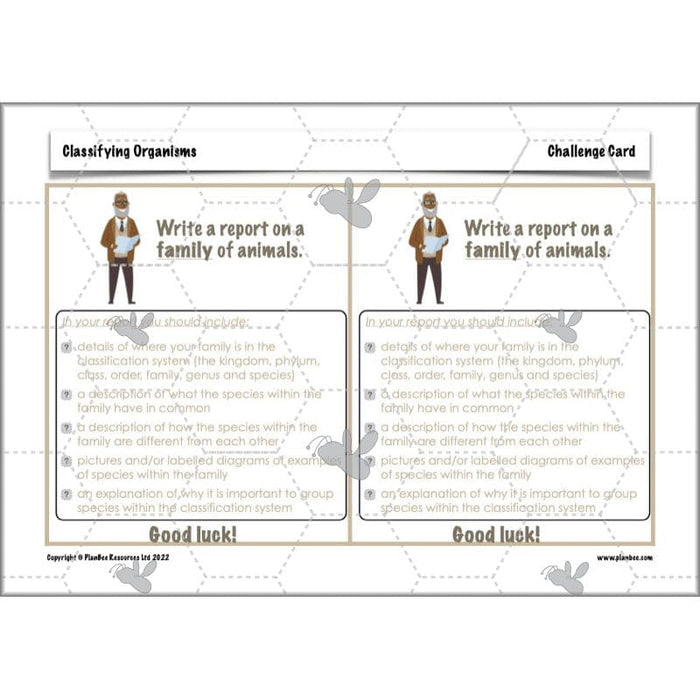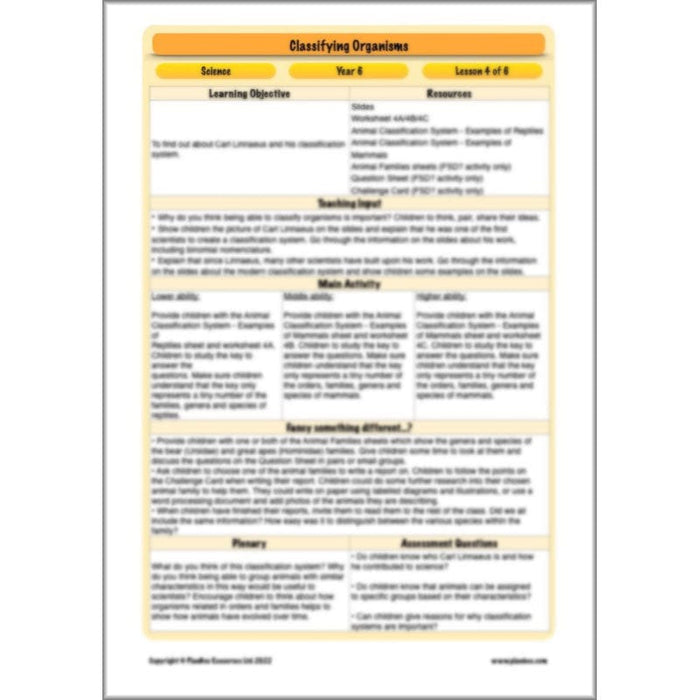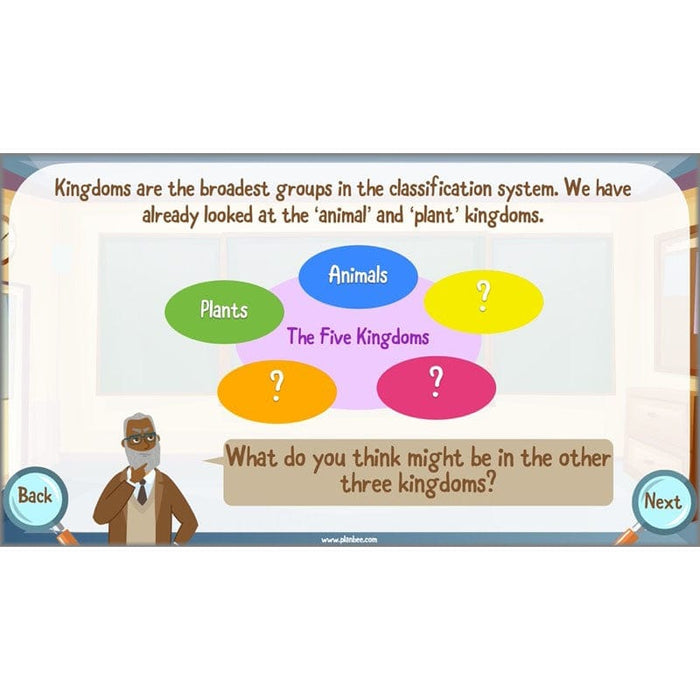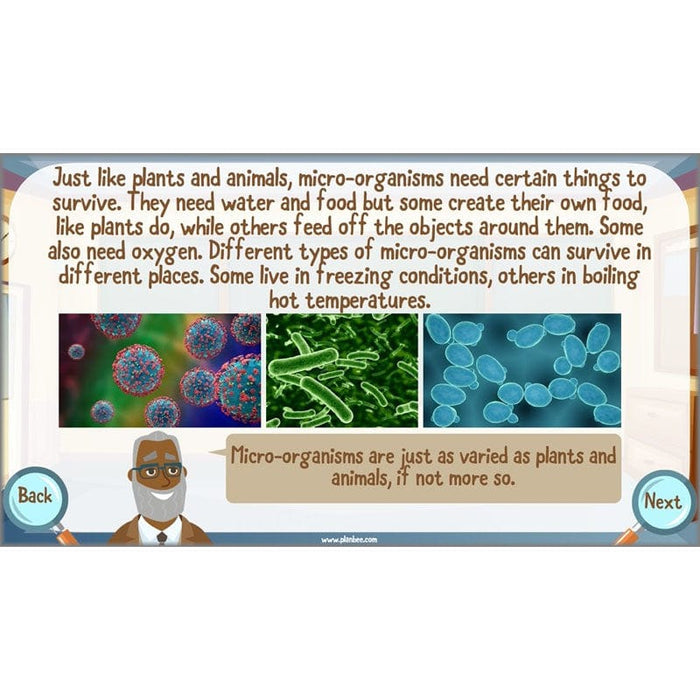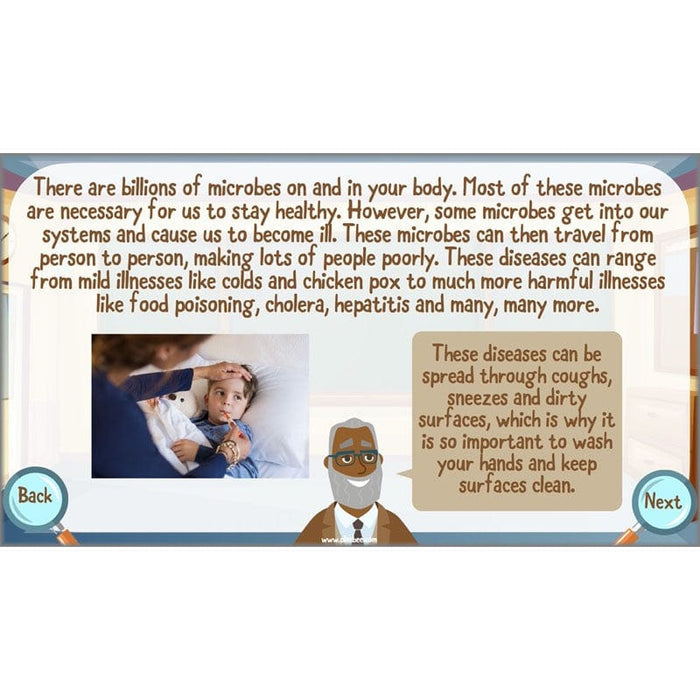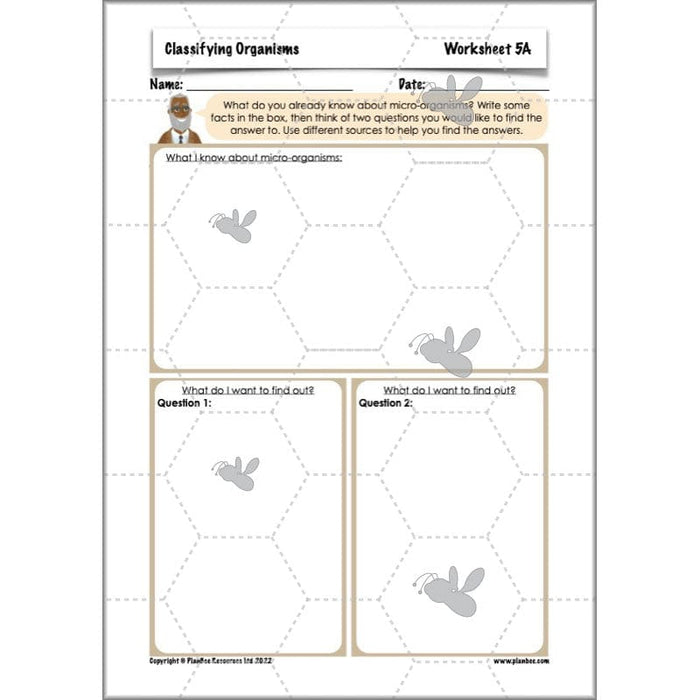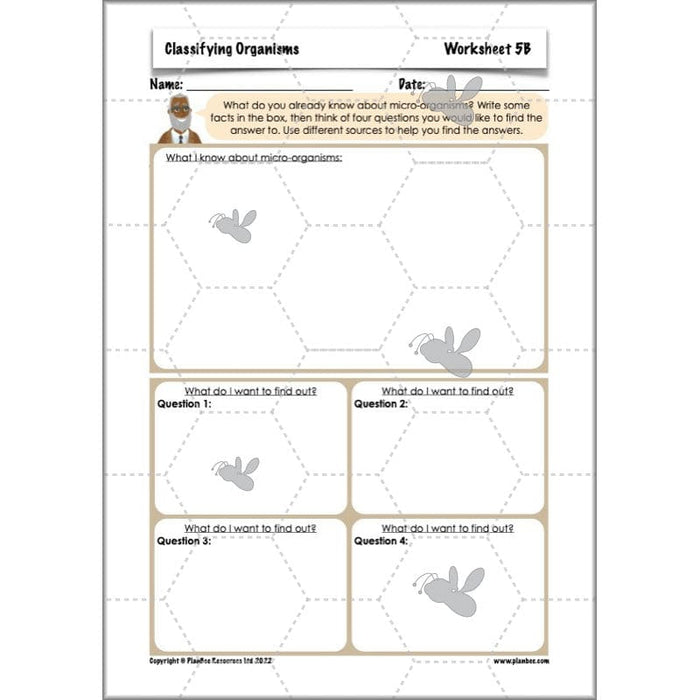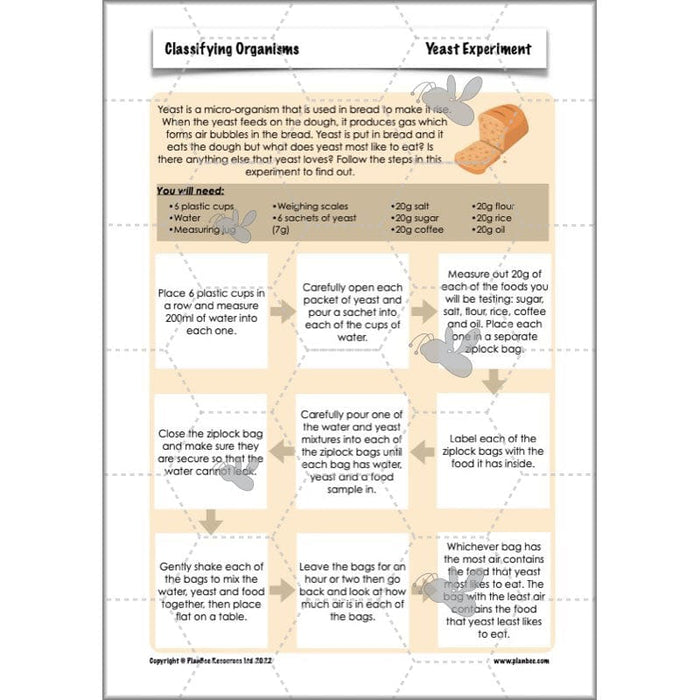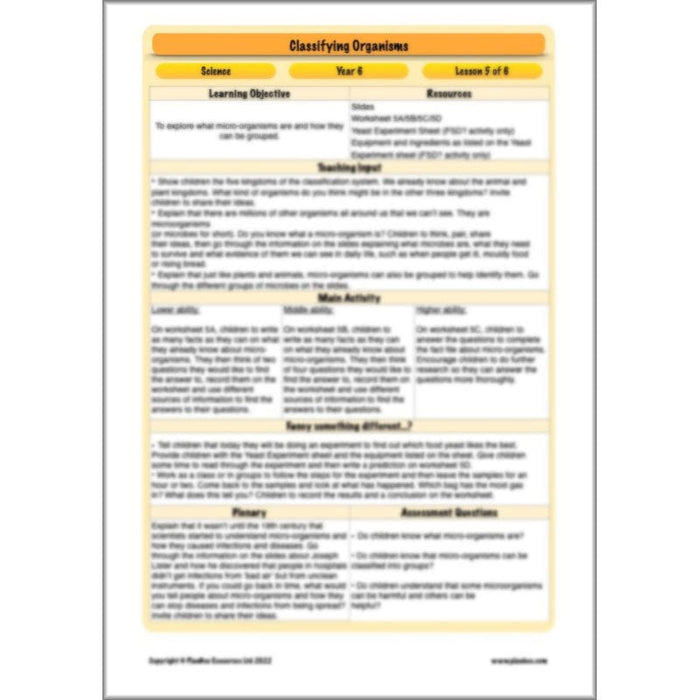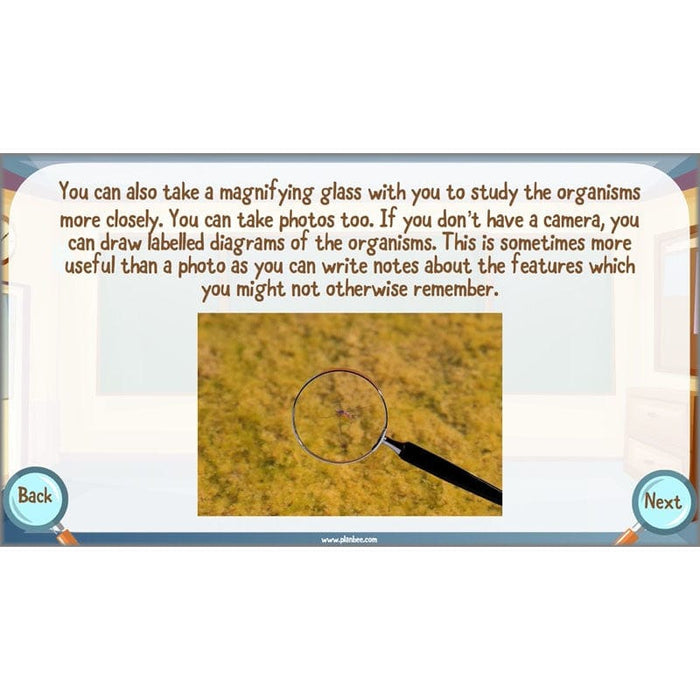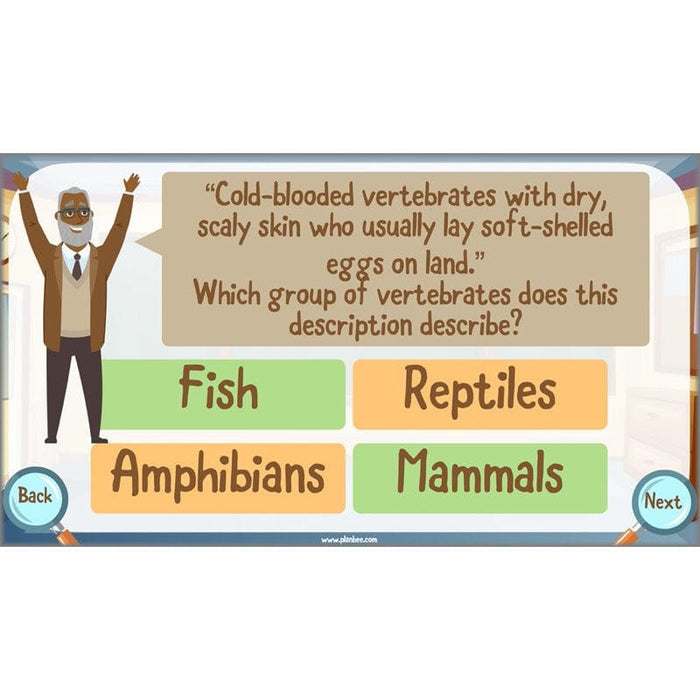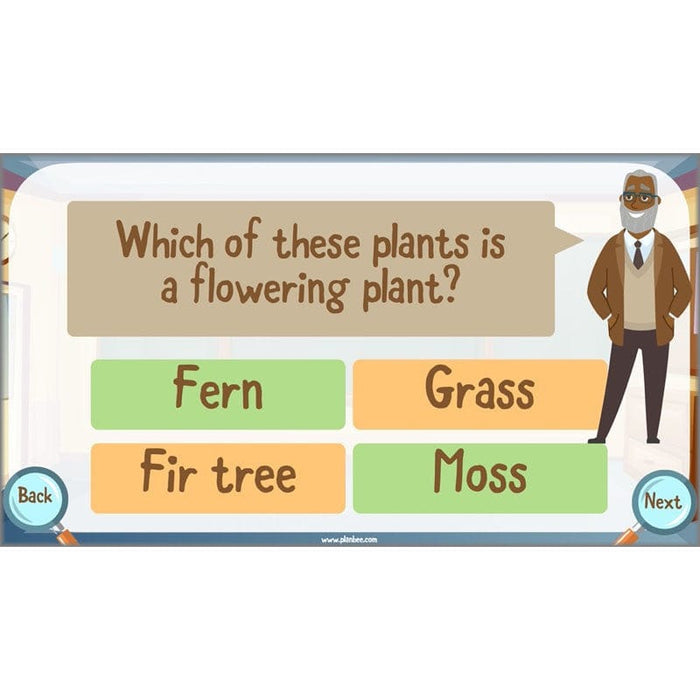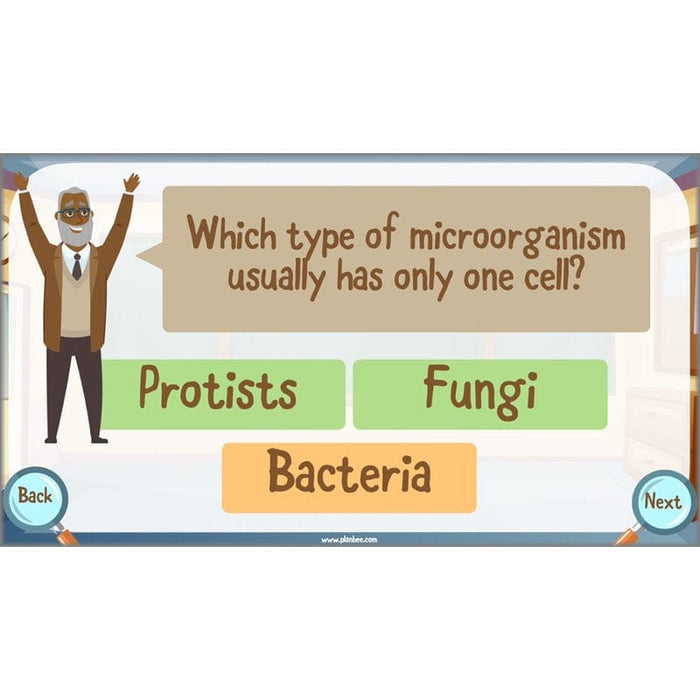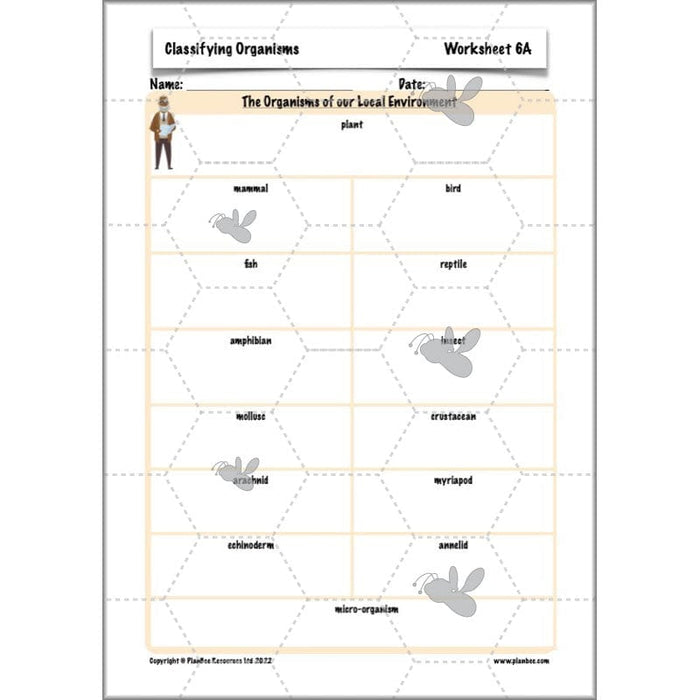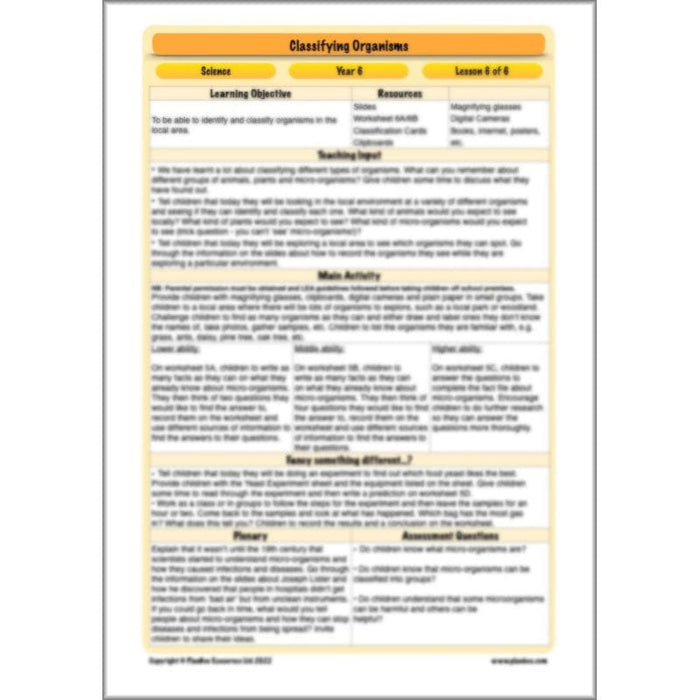#TheCompleteSeries6lessons
Containing everything you need to teach this complete 'Classifying Organisms' KS2 scheme of work, including lesson plans, slideshow presentations, differentiated activity ideas and a range of printable worksheets and resources, these Year 6 lessons are the perfect way to challenge your class' knowledge of living things and their habitats.
We also have this free Animal Classification Chart ready for you to download.
#Lesson1GroupingOrganisms
The first lesson in this series recaps your class's knowledge of the broad groups of organisms and challenges them to organise organisms into groups such as plants, mammals, reptiles and amphibians, as well as looking at some groups which might be less familiar, such as annelids, myriapods and arachnids.
What's included:
- Lesson plan
- Slides
- Activity ideas
- Differentiated worksheets
- Classification key
- Animal cards
- Challenge cards
#Lesson2SimilarOrganisms
Now that you class can classify animals according to their broad characteristics, they can have the chance to think about how to classify organisms that belong to the same group.
How are various mammals similar to or different from each other? How can flowering plants be split into groups?
Hopefully by the end of the lesson your class will be able to tell you!
What's included:
- Lesson plan
- Slides
- Activity ideas
- Differentiated worksheets
- Insect cards
- Bird cards
- Mammal cards
- Flowering plant cards
#Lesson3ClassifyingPlants
This engaging Classifying Plants Year 6 lesson explores the world of plants and how botanists classify different types of plants according to their characteristics.
Your KS2 class will learn about vascular and non-vascular plants, as well as flowering and non-flowering plants, and use what they know to sort a variety of plants from their local environment into groups.
What's included:
- Lesson plan
- Slides
- Activity ideas
- Differentiated worksheets
- Plant cards
#Lesson4TheClassificationSystem
This challenging classification of animals KS2 Science lessons starts by thinking about why it is important to be able to classify organisms, before introducing your class to Carl Linnaeus and his work on the classification system.
It then goes on to explore how scientists use the classification system today, looking at how organisms can be sorted by their kingdom, phylum, class, order, family, genus and species.
They can also explore how animals in the same genus are similar to and different from each other.
What's included:
- Lesson plan
- Slides
- Activity ideas
- Differentiated worksheets
- Animal classification system sheets
- Animal families sheets
- Question sheet
- Challenge card
#Lesson5Microorganisms
This microorganisms KS2 lesson builds on the children's knowledge of classifying organisms to explore how microorganisms can be split into the groups of protists, fungi and bacteria.
They will look at what a microorganism is, what they need to survive and how some microbes and helpful and some are harmful.
There is also the opportunity to carry out an investigation to see what yeast most likes to eat!
What's included:
- Lesson plan
- Slides
- Activity ideas
- Differentiated worksheets
- Yeast experiment sheet
#Lesson6LocalOrganisms
The final lesson in this series gives your class the chance to consolidate everything they have learnt about classifying organisms by letting them loose in their local environments to see how many plants, animals and other organisms they can spot! They will then sort them into the groups they have been studying, such as flowering, non-flowering plants, mammals, amphibians, arachnids, molluscs, birds, and many others. If it is not possible to explore the local environment, your class can look further afield as they research organisms that might live in other countries.
What's included:
- Lesson plan
- Slides
- Activity ideas
- Differentiated worksheets
- Classification cards
- End of Unit Quiz
Free Overview (Medium-Term Plan)
Download a free overview to support your teaching of this scheme of work.
Free Assessment Grid
Download a free, editable assessment grid to support your teaching of this scheme of work.
Curriculum Objectives covered
Year 5/6 Working Scientifically Objectives
- planning different types of scientific enquiries to answer questions, including recognising and controlling variables where necessary
- recording data and results of increasing complexity using scientific diagrams and labels, classification keys, tables, scatter graphs, bar and line graphs
- reporting and presenting findings from enquiries, including conclusions, causal relationships and explanations of and degree of trust in results, in oral and written forms such as displays and other presentations
Year 6 Living Things and their Habitats Objectives
- describe how living things are classified into broad groups according to common observable characteristics and based on similarities and differences, including micro-organisms, plants and animals
- give reasons for classifying plants and animals based on specific characteristics
